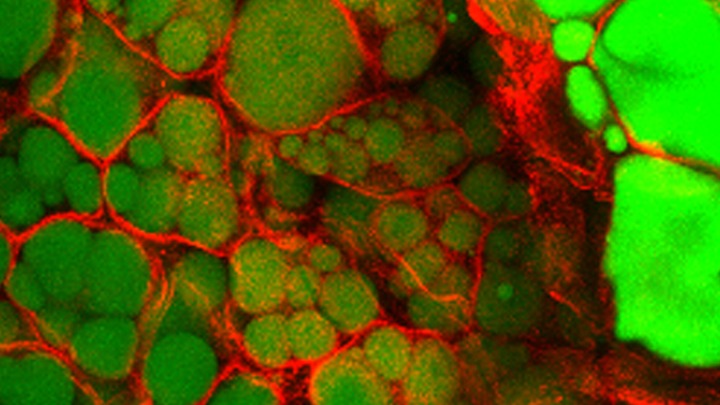
Researchers identify factors driving brown fat development
The same type of fat that enables infants to maintain their body temperature may hold a key for treating metabolic diseases in adults.
Since the fairly recent discovery of this so-called brown fat in adults, scientists have been trying to better understand how this type of fat develops and how it can affect metabolism.
Now, researchers at the University of Michigan Life Sciences Institute have uncovered a network of proteins and long noncoding RNA (lncRNA) working together to push fat cells to become brown. The findings were published August 7 in Proceedings of the National Academy of Sciences.
Rather than storing energy — like white fat cells do — brown fat burns energy to produce heat, a process called thermogenesis.
'Tricking' fat cells

“There is a lot of interest in figuring out how we can make more brown adipocytes and ‘trick’ them into a fat-burning mode,” says Jiandie Lin, Ph.D., faculty member at the LSI and the senior study author.
Using an unbiased genome-wide screen, researchers in Lin’s lab found that the transcription factor Zbtb7b activated the thermogenic gene program during fat cell differentiation. Zbtb7b stands for “zinc finger and BTB domain containing 7b.”
Further, when mice that lacked Zbtb7b were exposed to a cold environment, they were less able to maintain a steady body temperature. These findings indicate that Zbtb7b is necessary for brown fat formation and thermogenesis in mice.
But beyond identifying this novel protein, the researchers also clarified how the protein works together with noncoding RNA, an emerging class of developmental regulators, to control brown fat development and energy metabolism.
“Proteins in the cell don’t usually work just by themselves,” explains Lin, who is also a professor in the Department of Cell & Developmental Biology at the U-M Medical School. “They physically associate with other proteins or RNAs to form molecular machines that control gene expression, development and metabolism.”
The team previously discovered Blnc1, or Brown fat lncRNA 1, a lncRNA that promotes brown fat development. In their latest work, mass-spectrometry analysis revealed a physical interaction between Zbtb7b and heterogeneous nuclear ribonucleoprotein U (hnRNPU) — a protein that recruits Blnc1. This recruitment of Blnc1 allows Zbtb7b to regulate brown fat development and thermogenesis.
“The two pathways are actually connected in a single pathway,” Lin explains.
The researchers hope to use these results to determine whether this pathway is defective in obesity and perhaps to shed more light on what causes obesity and metabolic disorders.
“Now we can start to work on how these two pathways work together to drive fuel oxidation and thermogenesis,” says Siming Li, the lead study author, “and how they influence the way that a body controls glucose, lipids, body weight — all of these very important metabolic parameters.”
Go to Article
Zbtb7b engages the long noncoding RNA Blnc1 to drive brown and beige fat development and thermogenesis, Proceedings of the National Academy of Sciences. DOI: 10.1073/pnas.1703494114


